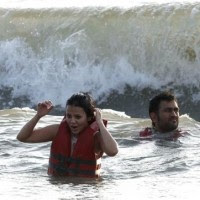Kidney Cancer Awareness
The James Whale Fund for Kidney Cancer, with support from Kidney Cancer UK, today announces new research that shows a shockingly low awareness and understanding of kidney cancer amongst the Great British general public. The YouGov survey of 2,145 GB adults shows that kidney cancer is the least heard about form of the disease, with only 2% of GB adults having heard much about it when compared to a range of other cancers. Interestingly, over half of GB adults claim to have heard most about cervical cancer and 42% for leukaemia, even though there are fewer cases of these diseases than kidney cancer each year. According to the survey, only half of GB adults have ever even heard of the term kidney cancer.
Often, kidney cancers are found incidentally, meaning that the cancer is found during medical tests for some other illness such as gallbladder disease.1 However, because the symptoms of kidney cancer can often be mistaken for signs of other diseases or ailments, the disease often goes undiagnosed or misdiagnosed until it has metastasized. The first course of treatment for kidney cancer is usually an operation to remove the primary tumor and the diseased kidney.2 Other commonly used treatments include immunotherapy, radiation, and chemotherapy.
The exact cause of kidney cancer is unknown; however, early detection can help to offset the spread of cancer; and recent advances in diagnosis and surgical procedures such as radiation and chemotherapy allow even more patients to live with the disease while maintaining their normal lifestyles and the objective of World Kidney Day and Kidney Cancer Awareness Month is to raise awareness and to encourage regular screenings of all patients with diabetes and hypertension for chronic kidney disease. If detected early, chronic kidney disease can be treated;
In adults, the most common type of kidney cancer is renal cell carcinoma. Other less common types of kidney cancer can occur. Transitional cell carcinoma, which affects the ureters, can also begin in the kidneys. Children are more likely to develop a kind of kidney cancer called Wilms’ tumor.The incidence of kidney cancer seems to be increasing, though it isn’t clear why. Many kidney cancers are detected during procedures for other diseases or conditions. Imaging techniques such as computerized tomography are being used more often, which may lead to the discovery of more kidney cancers.
Often, kidney cancers are found incidentally, meaning that the cancer is found during medical tests for some other illness such as gallbladder disease.1 However, because the symptoms of kidney cancer can often be mistaken for signs of other diseases or ailments, the disease often goes undiagnosed or misdiagnosed until it has metastasized. The first course of treatment for kidney cancer is usually an operation to remove the primary tumor and the diseased kidney.2 Other commonly used treatments include immunotherapy, radiation, and chemotherapy.
The exact cause of kidney cancer is unknown; however, early detection can help to offset the spread of cancer; and recent advances in diagnosis and surgical procedures such as radiation and chemotherapy allow even more patients to live with the disease while maintaining their normal lifestyles and the objective of World Kidney Day and Kidney Cancer Awareness Month is to raise awareness and to encourage regular screenings of all patients with diabetes and hypertension for chronic kidney disease. If detected early, chronic kidney disease can be treated;
In adults, the most common type of kidney cancer is renal cell carcinoma. Other less common types of kidney cancer can occur. Transitional cell carcinoma, which affects the ureters, can also begin in the kidneys. Children are more likely to develop a kind of kidney cancer called Wilms’ tumor.The incidence of kidney cancer seems to be increasing, though it isn’t clear why. Many kidney cancers are detected during procedures for other diseases or conditions. Imaging techniques such as computerized tomography are being used more often, which may lead to the discovery of more kidney cancers.







